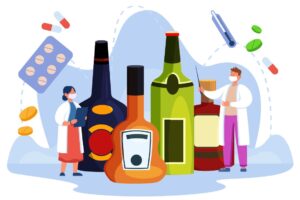
We do not know how many patients die in treatment centers from substance abuse brain injuries and disorders because the government does not keep track of deaths in treatment centers. One factor that complicates collecting such data is that these facilities tend to rush dying patients to the nearest emergency room. As a result, if the patient passes away, their death will be recorded by the hospital rather than the treatment center.
Another reason that accurate numbers do not exist for this question is that doctors often put something other than “substance abuse brain injuries” as the cause of death. The death certificate is likely to attribute the death to a cardiac arrest, seizure, or overdose.
It is difficult to prove that a person died from substance abuse brain injuries because, although you can observe the brain injuries on imaging studies and an autopsy, there is no diagnostic test to definitively establish the brain injuries as the cause of death. The doctor who signs off on the death certificate can, however, feel confident that the person suffered a cardiac arrest, stroke, seizure, or other condition related to the drug abuse and mark one of these conditions on the certificate instead.
Substance Abuse in America
Less than ten percent of the people in our country who need treatment for substance abuse at a specialized facility receive that treatment, according to government estimates. We do not know how many people die every year from substance abuse brain injuries, but we do know that there were more than 70,000 deaths from drug overdoses in 2017.
Drug Abuse and Brain Injuries
You do not have to experience an overdose to sustain a brain injury from drug usage. The brain injuries that substance abuse causes can be fatal, and those that do not result in death can result in significant and permanent impairments. Here are some examples of brain injuries typically associated with substance abuse:
Anoxic Brain Injury
When a person loses consciousness and stops breathing due to substance abuse, he or she can sustain an anoxic brain injury, meaning that the brain is not getting any oxygen at all. In as few as five or six minutes without oxygen, brain cells start to die. If the person is not revived right away, this condition can be fatal.
Hypoxic Brain Injury
With a hypoxic brain injury, the brain is getting some oxygen, but less than it needs to survive and function correctly. Alcohol and many drugs have a sedative effect that can cause a person to breathe too shallowly to feed the brain enough oxygen to remain healthy. Overdose-induced seizures can also lead to this kind of brain injury.
When a person with substance abuse issues experiences hypoxic brain damage, he or she has less healthy brain tissue in reserve in the event of a future brain injury. As a result, even if the initial hypoxic brain injury did not cause noticeable cognitive or motor impairment, he or she remains vulnerable to greater neurological harm from future adverse events.
Ischemic Stroke
If the absence (anoxia) of or decreased amount (hypoxia) of oxygen to the brain causes a sudden loss of blood to an area of the brain, the substance-impaired person can have a stroke. Drug users who inject drugs can also sustain a stroke when a small piece of heroin or another substance that did not get adequately crushed travels to the brain and causes a blood clot.
Traumatic Brain Injury
Being under the influence of drugs or alcohol can make a person more likely to fall or get into an accident. Both of these events can lead to traumatic brain injury (TBI).
Acquired Brain Injury
Doctors use the term “acquired brain injury” to distinguish the types of brain damage substance abuse can cause from traumatic brain injury. Anoxic and hypoxic brain injuries are types of acquired brain injury.
Acquired brain injury can cause:
- Depression
- Chronic pain
- Anxiety
- Headaches
- Social isolation
- Cognitive impairment including memory, reaction time, and decision making
These consequences of acquired brain damage lead to difficulty with relationships and employment. When a person loses jobs and friendships because of the functional challenges from brain damage, the person may turn to drugs or alcohol more than before, causing a vicious cycle of substance abuse.
The Responsibility of Treatment Centers
As specialists in dealing with people with substance abuse disorders, treatment centers should be on guard for any signs of brain injury in their patients. These treatment centers are healthcare providers that have a legal duty to deliver quality medical services. The centers must provide adequate monitoring of foreseeable medical issues like substance abuse brain injuries and treating urgent medical conditions promptly.
One reason patients die in treatment centers from substance abuse brain injuries is as a result of medical malpractice. If you or a close family member suffered a severe injury at a treatment center, the team at Newsome | Melton can review your case to see if you might have a claim for compensation. Call us today at 888-808-5977 for a free consultation.
